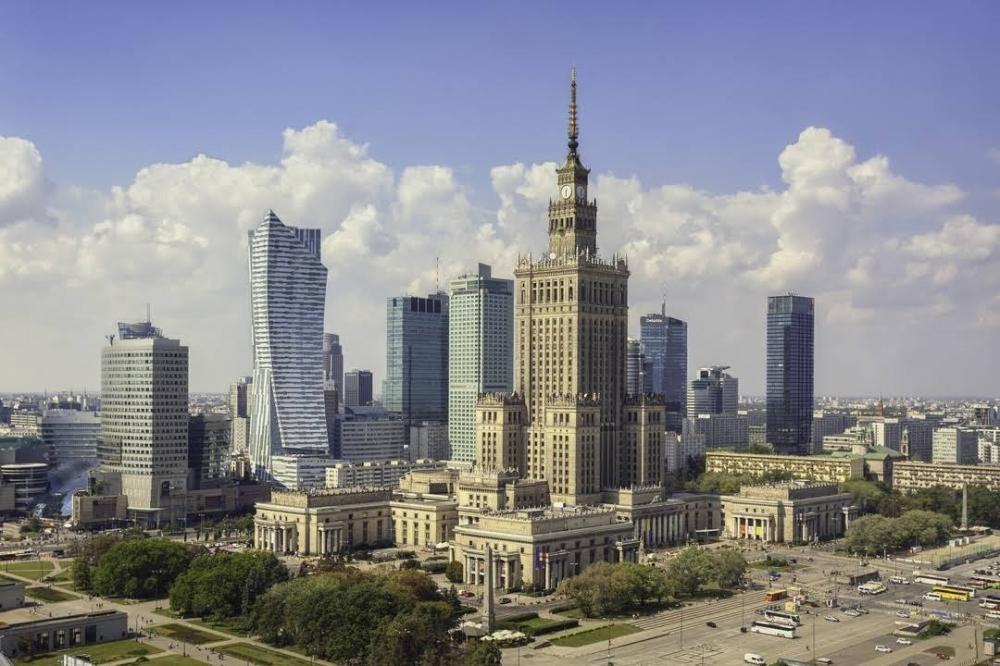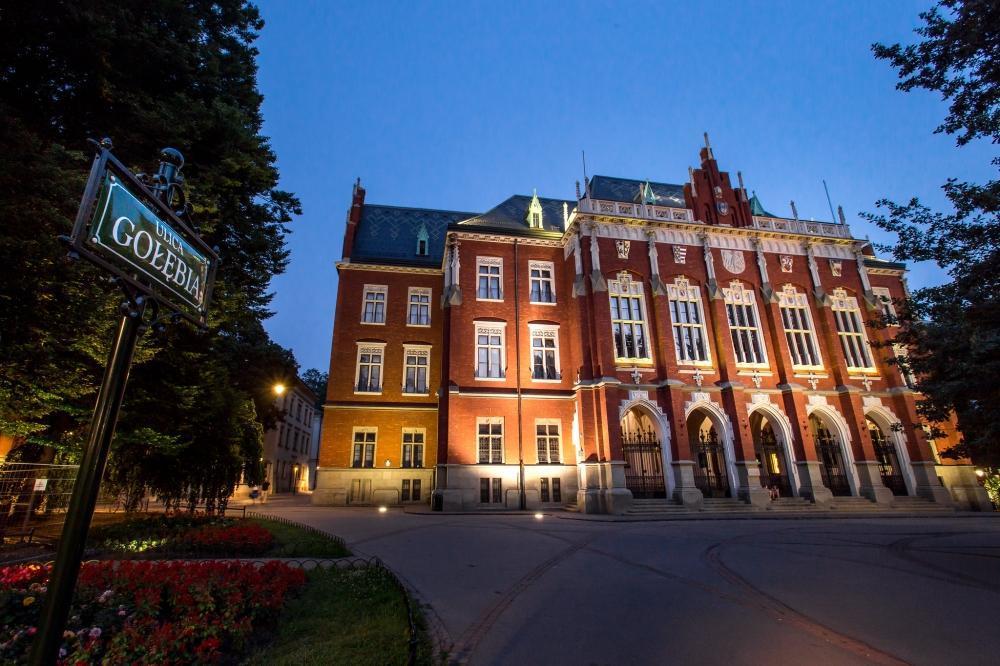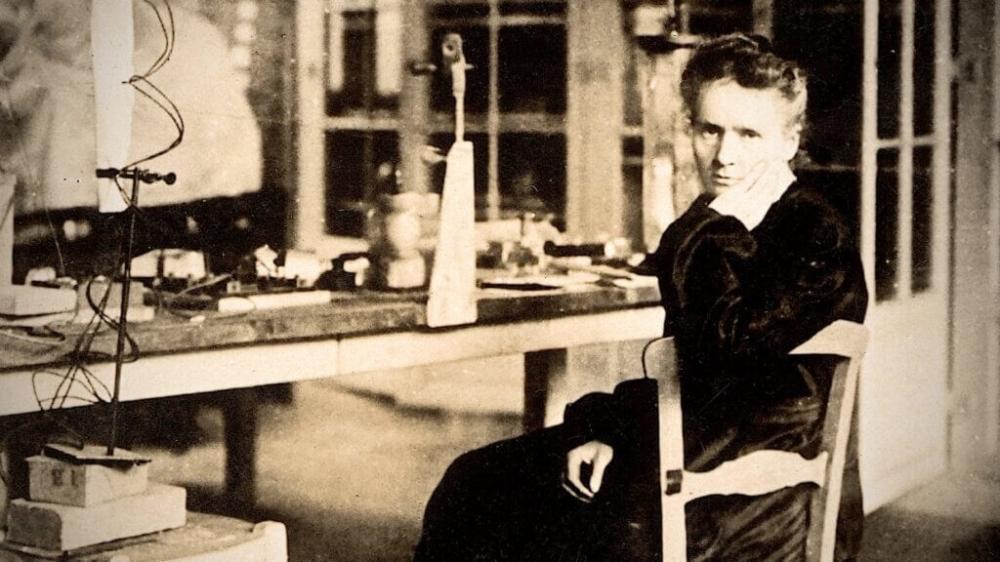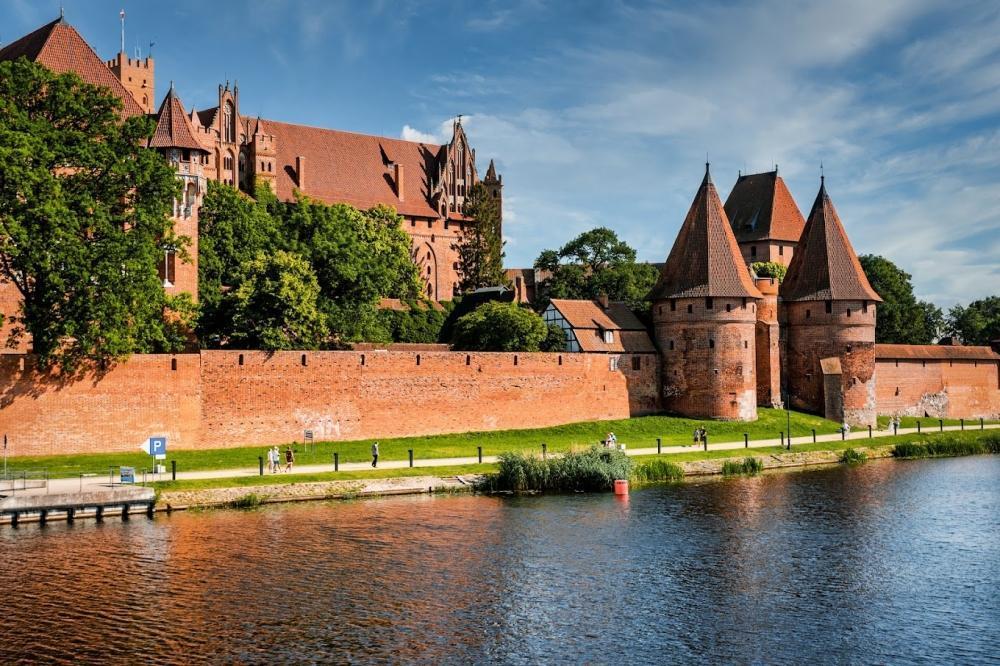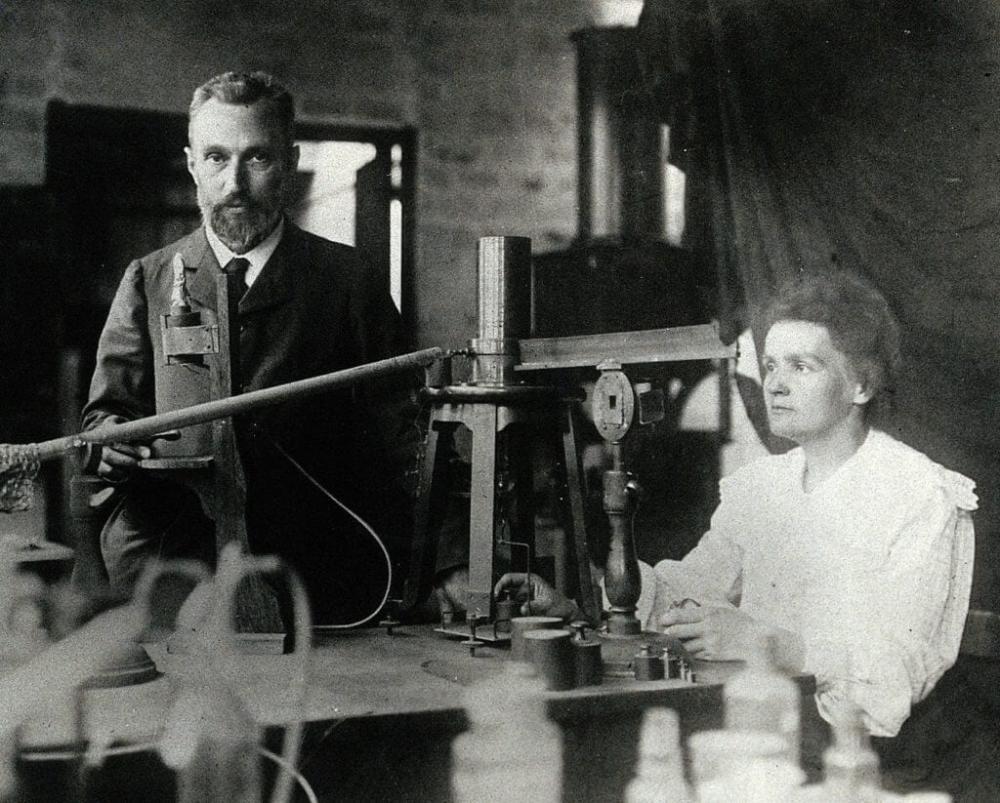James Karuhanga
Africa-Press – Rwanda. President Andrzej Sebastian Duda of Poland and First Lady Agata Kornhauser-Duda arrived in Rwanda on February 6 for a three-day State Visit. The next day, they were officially welcomed by President Paul Kagame and First Lady Jeannette Kagame in a ceremony held at Urugwiro Village.
Presidents Kagame and Duda later held a closed-door meeting which was followed by discussions with their respective delegations on deepening existing cooperation. Following the bilateral talks, among others, the Heads of State witnessed the signing of agreements on trade and economic cooperation, and in the fields of green technologies, environmental engineering, geology, and energy efficiency. Kagame and Duda also joined a roundtable discussion with Polish and Rwandan business leaders aimed at streamlining the implementation of the signed agreements and other ongoing economic projects between the two nations.
Rwanda and Poland enjoy commendable bilateral ties. Rwanda opened its Embassy in Warsaw in 2021, and Poland reciprocated – later on December 1, 2022 – by opening an Embassy in Rwanda, thereby bolstering diplomatic relations between the two countries.
But what do we know about Poland, a fascinating country of about 38 million people that serves as the geographical and cultural crossroads of Eastern and Western Europe? The basics are that its official name is the Republic of Poland, or Rzeczpospolita Polska (short form in Polish: Polska) in the official language, Polish. Majority of the Polish population is Roman Catholic, very much attached to their language and culture. Polish people prefer to speak their language in public fora even though they speak various other international languages.
About 1,500 Rwandans study in Polish universities
According to the Ambassador of Rwanda, Prof. Anastase Shyaka, “the current average” of Rwandan students studying in Poland is about 1,500.
“Poland is willing to have more, good ones, especially in engineering or technology and medical fields,” the Rwandan envoy told The New Times.
The oldest university in Poland – The Jagiellonian University – was founded by King Casimir III in 1364.
Jules Valentin Kabagamba, a third-year automation and robotics student (BSC degree) at Wyższa Szkola Komunikacji i Zarzadzania w Poznaniu, the College of Communications and Management in Poznan, in west-central Poland, said he likes the very many calm public spaces “such as parks where you get to meditate.”
“You get the opportunity to find or develop your talents in different fields. For me, I would say sports,” added Kabagamba, a volley ball player keen on taking his game to the next level.
“And you also get to improve your skills. I would recommend Poland; a fast-growing country among other European countries and a place showing good interest in the future of technology, and a clear vision.”
Every year, Amb Shyaka said, very good universities in Poland offer about 80 competitive scholarships (free tuition) to Rwandan citizens who qualify.
“These include Silesia University of Technology, University of Silesia, Poznan University of Technology, Gdansk University, SGGW, Lodz Technical University, Cracow University of Technology.”
World-class low-cost academic institutions, vibrant culture
Poland has some of the oldest universities in Europe. The oldest university in Poland – The Jagiellonian University – was founded by King Casimir III in 1364.
Besides its rich history, culture, serene beauty, and economy, students prefer studying in Poland because of its world-class academic institutions, vibrant culture, and significantly lower education costs compared to top study-abroad destinations such as Australia, the United States, France, and others. The country has more than 450 higher education institutions. One of the main reasons for studying in Poland is that the internationally renowned Polish education system adheres to the standards established by the Bologna process, a series of ministerial meetings and agreements between European countries to ensure comparability in the standards and quality of higher-education qualifications.
Compared to other EU study destinations, international students consider Poland a more affordable option. Reports indicate that the high quality of education outweighs the costs, making Poland one of the best places to study. Average fees vary between private and public universities. Polish nationals get their university education for free at government-funded, public universities.
Kabagamba said: “International students pay a very low tuition fee and are offered scholarships in the beginning or in between their studies due to their academic competences or talents.”
Many Nobel Prize winners
The Nobel Prize is a set of annual international awards bestowed on “those who conferred the greatest benefit on humankind”, first instituted in 1901. The Nobel Prize is the highest honour that scientists and writers can receive for their work.
Marie Curie Sklodowska, the first woman to win a Nobel Prize and the first person to receive it twice in two different sciences, was Polish.
Since 1903, there have been 18 Poles who were awarded 19 Nobel Prizes.
Poles have been the recipients in all Nobel prize categories: Physics, Chemistry, Physiology or Medicine, Literature, Peace and Economics.
Marie Curie Sklodowska, the first woman to win a Nobel Prize and the first person to receive it twice in two different sciences, was Polish. The Curie family received the most prizes, with four prizes awarded to five individual laureates. Marie Curie received the prizes in Physics (in 1903) and Chemistry (in 1911).
Marie Curie Sklodowska with her husband, Pierre Curie.
Main cities
Warsaw, the capital of Poland (Polish: Warszawa) is the largest city of Poland. The country’s capital combines modern buildings with historic architecture, most of which was heavily damaged during World War II but later restored in one of the most in-depth reconstruction efforts in European history.
Warsaw stands on the Vistula River in east-central Poland, roughly 260 kilometres (160 mi) from the Baltic Sea and 300 kilometres (190 mi) from the Carpathian Mountains. Its population is estimated at 1.740 million residents within a greater metropolitan area of 2.666 million residents, which makes Warsaw the nineth most-populous capital city in the European Union.
Krakow, the metropolis of southern Poland and the capital city of the Malopolska Province, is the second largest city of Poland and the country’s ancient capital.
It is a historic centre of arts and education and the home of Pope John Paul II, head of the Catholic Church and sovereign of the Vatican City State from 1978 until his death in 2005. The former head of the Catholic Church was Polish.
Krakow is regarded as the top tourist destination of Poland. The city’s seven universities plus almost 20 other institutions of higher education make it the country’s leading center of science and education. Its expanding service sector is the lifeblood of local economy but varied industry and production still provide substantial proportions of jobs and wealth.
Lodz is the third-largest city in Poland. Located in the central part of the country, the capital of Łódź Voivodeship is approximately 135 kilometres (84 mi) south-west of Warsaw. Łódź is a thriving center of academic life hosting three major state-owned universities, six higher education establishments operating for more than a half of the century, and a number of smaller schools of higher education. The Piotrkowska Street, which remains the high-street and main tourist attraction in the city, runs north to south for a little over five kilometres, making it one of the longest commercial streets in the world.
Gdansk is one of the most active ports on the busy Baltic Sea. The city is the capital of the Pomeranian Voivodeship, Poland’s principal seaport and the centre of the country’s fourth-largest metropolitan area.
Gdańsk, the largest city in the Pomerania region of Northern Poland, has some buildings surviving from the time of the Hanseatic League. Most tourist attractions are located along or near Ulica Długa (Long Street) and Długi Targ (Long Market), a pedestrian thoroughfare surrounded by buildings reconstructed in historical (primarily during the 17th century) style and flanked at both ends by elaborate city gates.
Poznan, a city on the Warta River in west-central Poland in the Greater Poland region, is best known for its renaissance old town, destroyed during World War II and then rebuilt, and Ostrów Tumski cathedral.
Poznań, the seat of Poland’s first bishopric, is home to several institutions of higher education, including Adam Mickiewicz University founded in 1919, and Poznań Technical University, founded in 1921. This important cultural and business centre is one of Poland’s most populous regions and is among the oldest cities in Poland. Poznań is one of the four largest academic centers in Poland. The number of students in the city of Poznań is about 140, 000 (fourth or third after Warsaw, Cracow and close to Wrocław student population). It is reported that every one of four inhabitants in Poznań is a student.
Warsaw was destroyed during World War II
The capital of Poland, Warsaw, was heavily bombed and razed by Nazi Germany in 1944 during World War II. The Poles rebuilt the city after the war using the detailed paintings of Bernardo Bellotto, a Venetian artist.
Today visitors can still see buildings in the Old Town of Warsaw that look as they did in the 14th century, and it’s all testament to the incredible strength and resilience of the Polish people.
Tripled value of its economy in last 30 years
Poland has tripled the value of its economy in the last 30 years with some of the highest economic growth rates in the world. According to the World Bank, Poland’s economic ascent is remarkable. After transitioning from communism, it is noted, Poland’s per capita GDP growth was fast and stable – averaging about 4 percent per year. The country moved from middle to high-income status in less than 15 years.
Poland is the second fastest growing economy – worldwide – after China. The Polish economy expanded rapidly due to investment and innovation.
Powerhouse of technology and industrial transformation
Poland’s IT and technology industry is thriving, and the country is fast becoming the world’s latest and fastest emerging tech hub thanks to its central location in Europe, economic potential and wealth of tech talent.
Reports indicate that in terms of Industry 4.0, the integration of intelligent digital technologies into manufacturing and industrial processes, the most promising sectors are automotive and aviation, followed by pharmaceuticals and household appliances. The automotive and aerospace industries are important to the country’s manufacturing sector. Automotive manufacturing alone, it is reported, employs more than 213,000 workers in Poland.
Biggest Special Economic Zone in Europe, second biggest worldwide
Poland has the biggest Special Economic Zone (Katowice, KSSE) in Europe and second biggest in the World after Dubai. The Katowice Special Economic Zone (KSEZ) was established under the Regulation of the Council of Ministers of June 1996 to support and advance restructuring processes, as well as to generate employment in the region.
Over 540 business entities are operating in the zone and have, so far, invested approximately Eur 9,6 billion and created more than 90,000 new jobs. The KSEZ offers a total of 2 749.3570 hectares in land across 48 communes.
Home to the world’s biggest castle
The Castle of the Teutonic Order in Malbork is the largest castle in the world by land area. Originally built in the 13th century as a Teutonic castle and fortress, it’s also a UNESCO World Heritage Site. Poland is home to a remarkable 15 UNESCO World Heritage Sites!
The Castle of the Teutonic Order in Malbork is the largest castle in the world.
Poland has one of the world’s oldest salt mines
Poland is home to the 800-year-old Wieliczka Salt Mine, one of the oldest in the world famed as the Underground Salt Cathedral of Poland. The UNESCO World Heritage Site has been producing salt continuously since the 13th century until 2007.
Europe’s heaviest animals live in Poland
The endangered European bison, or the wisent, is the heaviest land animal in Europe, weighing over 600 kilos on average. They are reportedly found roaming on the 150,000 hectares of the Białowieża Primeval Forest in Poland – the last primaeval forest in Europe.
The world’s first upside down house
Poland is home to the first upside down house in the world, the topsy-turvy wooden house that was built the wrong way up in a forest. Unveiled in 2007, the house is found in the tiny Polish village of Szymbark.
Original Gutenberg Bible in Poland
There are only nine copies of the Gutenberg Bible remaining in their original 15th-century binding and one of them is found in the Diocesan Museum in the little town of Pelplin in Poland’s Kociewie region. The Gutenberg Bible was the first major book printed using a printing press and is one of the rarest books in the world.
Mineral resources
Poland is relatively well endowed with natural resources. Its principal mineral asset is bituminous coal, although brown coal is mined as well. Most of the bituminous output is derived from the rich Upper Silesian coalfield. Other fuel resources include small amounts of petroleum and moderately large deposits of natural gas. Sulfur is Poland’s second most important mineral. The historic salt mine in Wieliczka, near Kraków, has been in continuous use since the 13th century. In 1978 it was among the first places to be named a UNESCO World Heritage site.
Marie Curie Sklodowska with her husband, Pierre Curie.
Source: The New Times
For More News And Analysis About Rwanda Follow Africa-Press

